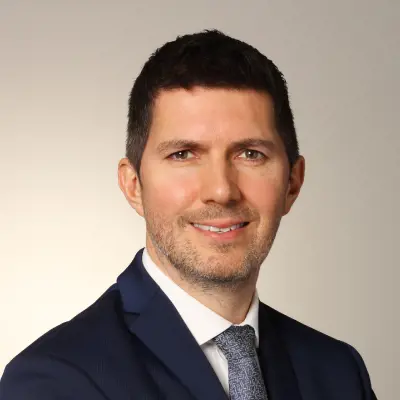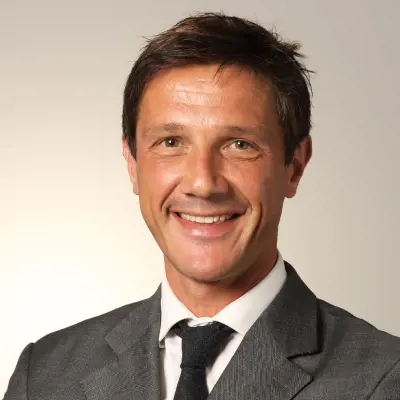How would you describe the strategy?
Our strategy is to combine the selection of high-quality securities via a fundamental analysis and portfolio construction using a minimum variance approach.(1) The fi rst step in the investment process entails investing in 60 to 70(2) high-quality companies that meet the following fi ve criteria: a strong competitive advantage, high growth potential, high profi tability, a solid balance sheet and that are run by a strong management team. We optimise portfolio construction in two ways: the second step of the process is to use minimum variance techniques to minimise its volatility, and the third is to use derivatives to further reduce drawdown potential and volatility. In doing so the strategy makes use of three skillsets within Candriam: fundamental analysis, quant techniques and derivatives.
What sets your strategy apart?
A very important differentiator is that it’s fundamentally managed. The vast majority of equity strategies aiming to reduce vola tility do so through a quantitative approach, systematically investing in fi rms with no thought about their future potential to outperform or even what their businesses are involved in because they’re solely based on historical data. Ours is also the only such strategy with a quality growth style – in fact, we’re ranked by Morningstar© in its growth category. All the other low volatility products are either in the blended or value categories.(3)
Something else that really makes the strategy unique is the way we use derivative protection techniques at a very minimal cost – we actually target a cost of zero.
How does the derivative overlay work?
We buy longterm put options on major European equity indices to protect the fund against falling equity markets. We’re able to do this at extremely low cost by selling covered call options on the most expensive individual positions in the cash equity portfolio. Doing so earns us a premium that we use to buy the protection. This technique has played an important part in the strategy’s strong performance in 2018(4) – as well as providing downside protection, it has actually boosted the strategy’s return.
Why did you specifically choose to combine quality with volatility reduction?
That’s because of Candriam’s investment beliefs. The five criteria listed above are inscribed in Candriam’s DNA, and those criteria are classic quality indicators. Firms with these five attributes have been shown to outperform the broad market significantly over the long run, and we’ve conducted extensive back tests to show that.(5)
That’s why the strategy adopts a quality approach. Using volatility-reducing techniques on a high-quality fundamentally managed portfolio is a way of maximising risk-adjusted performance
How would you expect the fund to perform in different market environments?
Generally speaking, the strategy outperforms in stable or gradually rising markets and above all during phases of slowdown, when it tends to outperform thanks to the protection techniques applied. Even though its beta is typically between 0.5–0.8, the strategy has shown its ability to outperform in rising markets. There’s only one environment in which it would be likely to underperform the broad market, and that’s when the market is rebounding and is being driven by highly leveraged, highrisk value stocks. This kind of situation could occur when a major central bank unexpectedly cuts rates, or in similar conditions to 2009 when everything was very cheap and high risk stocks outperformed.
But it’s important to remember that the strategy’s aim isn’t to outperform all the time – it’s to outperform over the long term. Historically, it has suffered when there’s been a rotation out of quality, but it always quickly rebounds, and that’s reflected in its very strong longterm performance.
What are Candriam’s credentials in managing this kind of strategy?
There are three steps to the investment process, and we need to be good at them all. First, we have a strong fundamental team of European equity analysts. They’re organised by sector and have an average of over 16 years of experience.
This team is also very stable, with a long history of working together. Personally, I’ve been with the firm for over 20 years and we all know how the other team members work. The second step is minimum variance, and it’s the same story here – our four investment engineers have an average of over 16 years’ experience, they have vast quantitative expertise and they’ve been working together for several years. And then we have a head of derivatives with over 20 years of experience. He’s a former trader and is an expert in implementing covered calls and protection techniques.
Is this the right strategy for ESG(7) investors?
Absolutely! ESG(8) criteria have been an integral part of our investment process since 2011. Our extrafinancial analysis lets us better understand the risks and the opportunities within these ESG(9)criteria. We assess the exposure of companies’ activities, and stakeholder management, in relation to major sustainability themes. First, we exclude companies that fail to comply with the 10 United Nations Global Compact Principles, as well as those involved in controversial activities such as weapons, tobacco, thermal coal and other activities that we deem non-sustainable. This process allows us, in fine, to reduce the investment universe by at least 20%.
We then thoroughly analyse each company in this universe in accordance with the aforementioned five fundamental criteria, combining financial and extra-financial analysis.
Alongside our ESG team, Candriam carries out an intensive dialogue(10) with the companies in which we invest, discussing questions related to ESG issues and the improvements they can make in their practices. This approach is an excellent means of minimising investment related risk.



